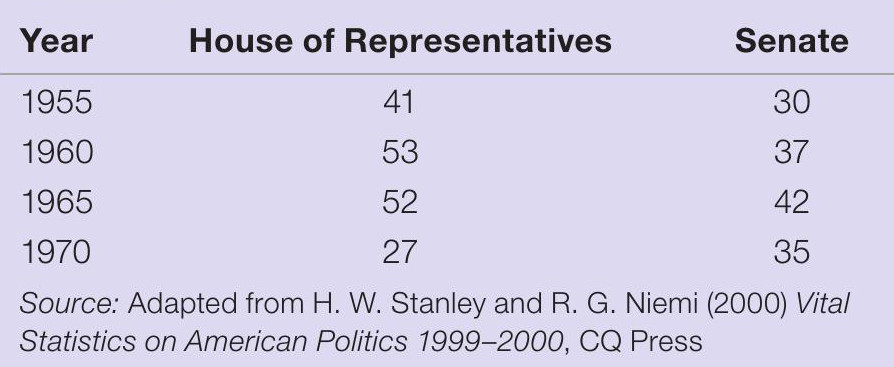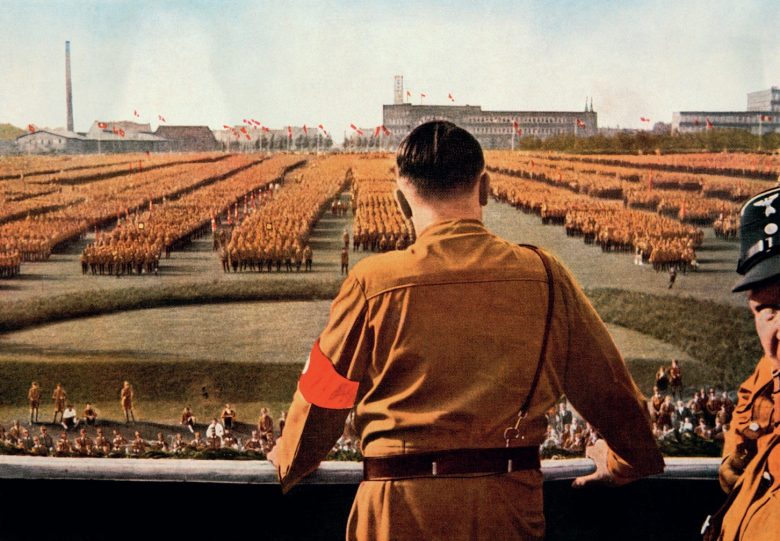
In the USA the divisions within the major parties have historically been deep. For many years, both parties in the USA had conservative and liberal wings. There was therefore no well-defined ideological dividing line between them. This was particularly evident during the mid-century years. The Civil Rights Act of 1964 was the historic measure that ended the system of segregation by which African Americans in the southern states were condemned — by law — to a subordinate status. Republicans in the House of Representatives backed the bill, when it came before Congress, by 138 to 34, while House Democrats supported it by 152 to 96.
The divisions within the parties extended beyond civil rights and are recorded in ‘party unity scores’, which measure the percentage of recorded votes in Congress when a majority of Democrats oppose a majority of Republicans. When the figure is high, there is a relatively high level of party unity, because members of Congress are voting together as a bloc. When the figure is relatively low, there is little party unity. The figures shown in Table 1 confirm that, in most votes during the midcentury years, there were relatively low levels of party unity. In other words, there were significant fractures within the parties.
Your organisation does not have access to this article.
Sign up today to give your students the edge they need to achieve their best grades with subject expertise
Subscribe




